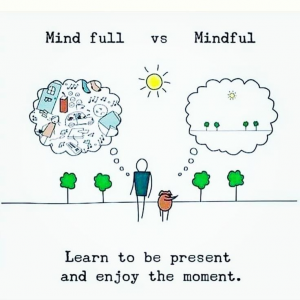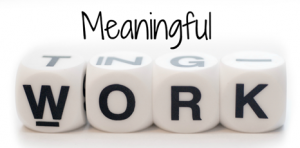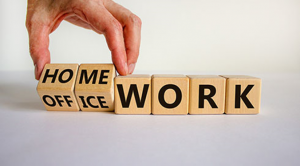Controlling Stress By Practicing Mindfulness
 We are all dealing with different stressors in our lives right now. Work responsibilities, balancing career and family, health concerns – the list seems to go on and on. Now that we’ve started a New Year, many of us are looking for ways to reduce anxiety and feel a sense of calm and balance in our day-to-day lives. You’ve probably heard the term “mindfulness” thrown around and wondered if it really works or is just another buzzword or fad. Research has shown that practicing mindfulness reduces activity in the part of your brain called the amygdala. The amygdala is central to switching on your stress response, so by practicing mindfulness, you’re reducing your background level of stress. And who doesn’t need a little of that right now?
We are all dealing with different stressors in our lives right now. Work responsibilities, balancing career and family, health concerns – the list seems to go on and on. Now that we’ve started a New Year, many of us are looking for ways to reduce anxiety and feel a sense of calm and balance in our day-to-day lives. You’ve probably heard the term “mindfulness” thrown around and wondered if it really works or is just another buzzword or fad. Research has shown that practicing mindfulness reduces activity in the part of your brain called the amygdala. The amygdala is central to switching on your stress response, so by practicing mindfulness, you’re reducing your background level of stress. And who doesn’t need a little of that right now?
So, what exactly is mindfulness and how can it help during times of difficulty, as well as everyday life? Jon Kabat-Zinn, psychologist and founder of the Mindfulness-Based Stress Reduction (MBSR) program, defines mindfulness as “paying attention in a particular way, on purpose, in the present moment and nonjudgmentally.” In short, to be mindful is to be purposeful about where you direct your attention. Instead of letting your thoughts run wild, you take a step back and become intentional about where you put your focus.
Here a few of the benefits of practicing mindfulness:
- Physical and Emotional Health: According to research, practicing mindfulness regularly can help manage anxiety. It also complements medical and psychological treatments and can help reduce pain and symptoms of conditions such as depression, high blood pressure and addiction.
- Emotional and Cognitive Regulation: A regular mindfulness practice has been shown to increase focus and help with memory and problem-solving abilities. It can also improve the brain’s capacity for decision-making.
- Happiness and Joy: By practicing mindfulness, you’ll find it easier to take a few deep breaths and respond in a more patient and thoughtful way to challenging situations or people. You’ll begin to slow down during particularly difficult parts of your day and not react to problems hastily. It also helps you tune in to pleasant experiences that are around you, even during times of stress.
Mindfulness takes practice, but the effort is well worth the reward! In our next article, we’ll take a look at some simple ways to start a mindfulness practice. Leah M Joppy and Associates has conducted many seminars focusing on strategies we can all use to get through life’s challenges. We can tailor a seminar that focuses on mindfulness practices, stress reduction and more. How can we help you? Call us at 301-670-0051 or email leah@lmja.com to learn more.








